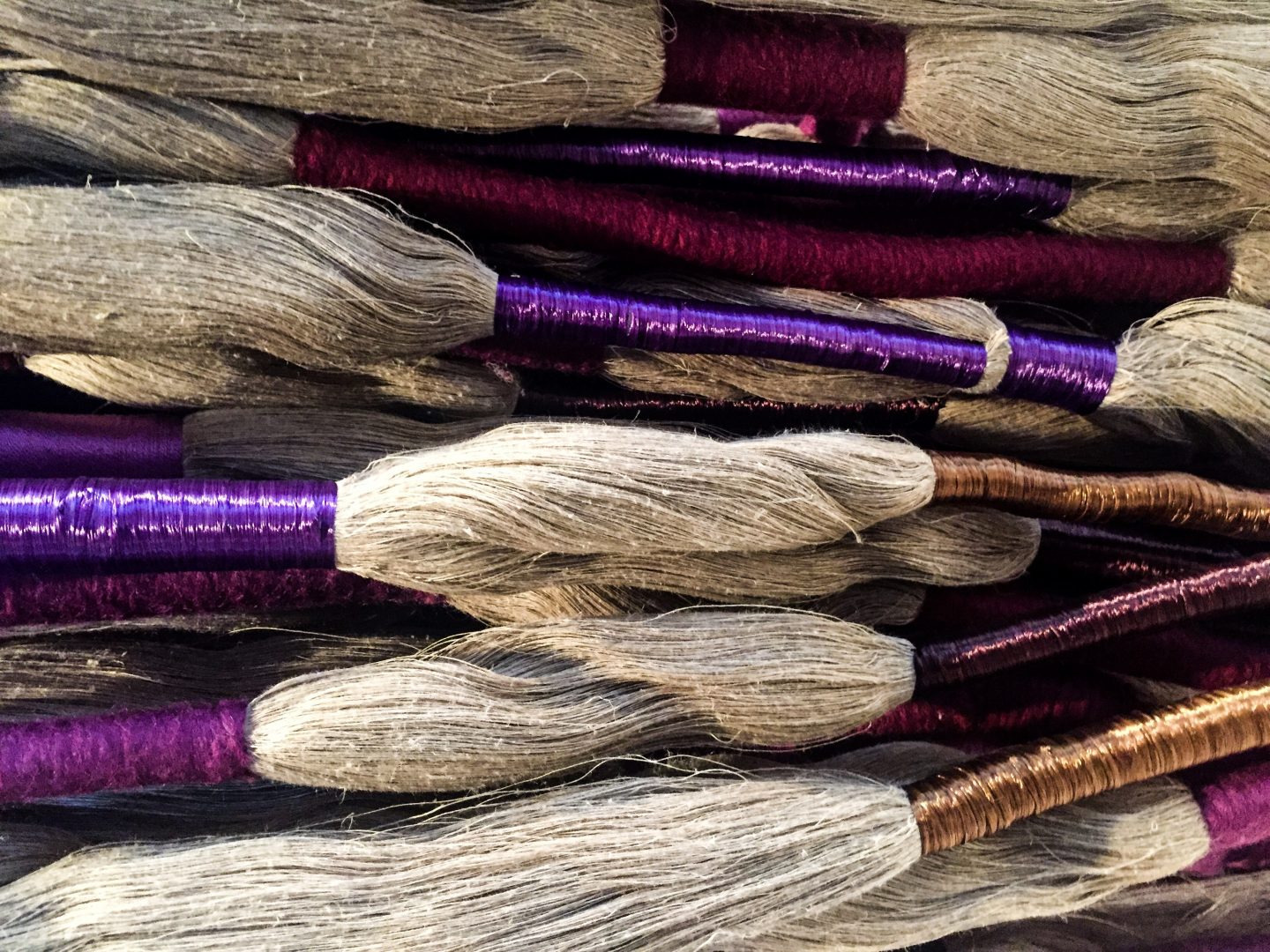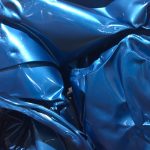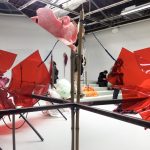“It is so important to make every day. The discovery comes in the making.” Sheila Hicks
Sheila Hicks is an American textile artist whose colourful, soft sculptures bring together material traditions from Western and non-Western cultures. I recently visited her exhibition ‘Lifelines,’ on display at the Centre Pompidou in Paris. I loved learning about her experimentation with colour and how this has been a constant creative force throughout her life-long textile practice.
In this post, I draw on works from the exhibition to consider how these could be used as a starting point for children’s creative learning through play with materials. This post is part of a four-part series looking at how artist’s experimentation with materials can be used to support creative learning. If you have not already read the first explored the sculpture practice of César Baldaccini, check it out here.
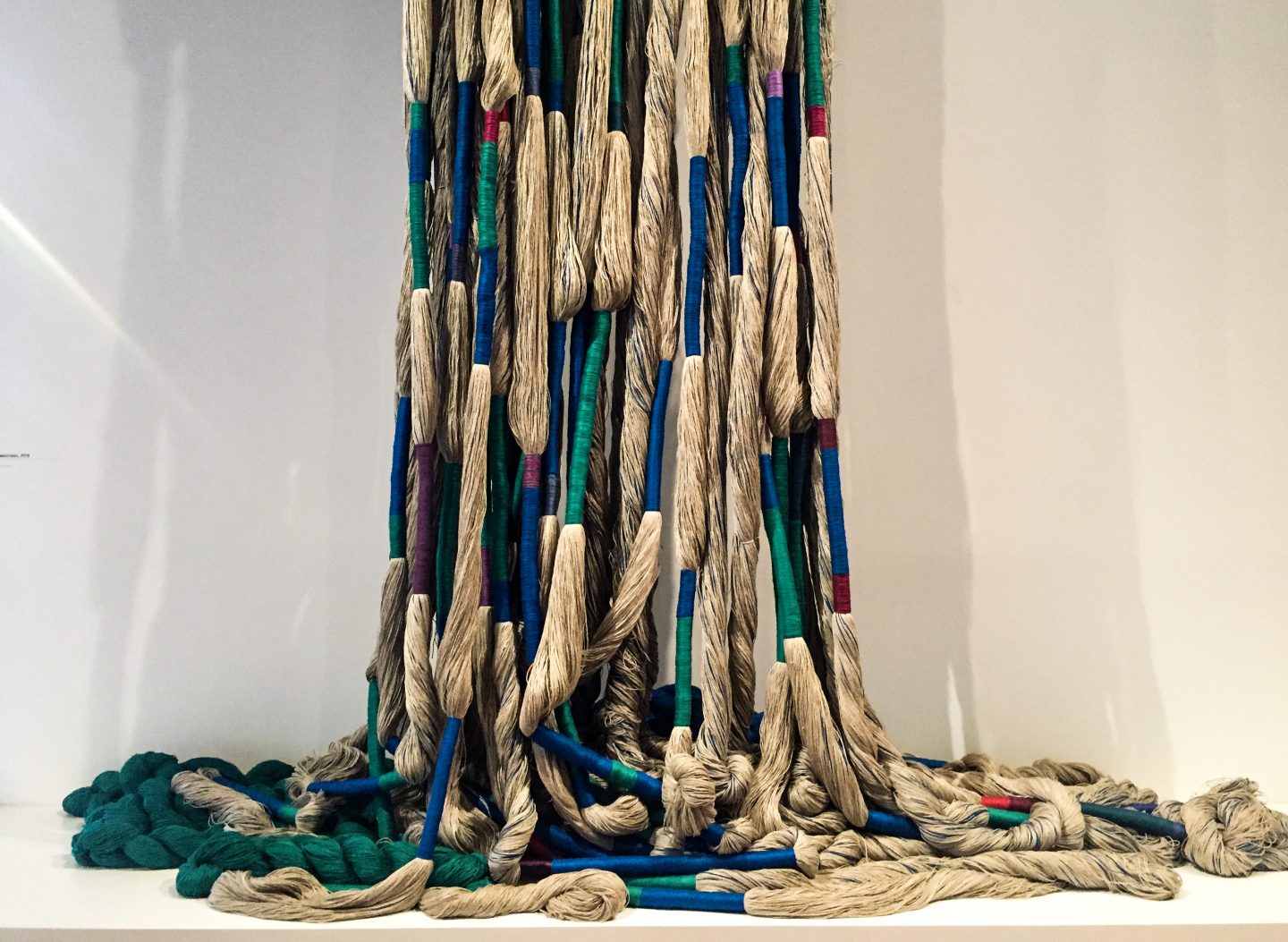
Chapultepec (2018). Linen. 24 components, each component 800 cm.
Sheila Hicks and ‘colour as material’
Sheila Hicks was born in Nebraska, USA in the 1930’s. Whilst studying painting at Yale University she was mentored by Josef Albers – an art and design educator well known for his enduring love and expertise in colour theory. Albers had previously worked at the Bauhaus School (Germany) and the Black Mountain College (USA). His writings on colour theory, such as the book ‘Interaction of Color’ (1963), formed the basis of many art education programmes throughout the twentieth century (Tate website, 2018). When looking at Sheila Hicks’ vibrant and chromatic artworks, you can feel the influence of Albers in her experimentation with textiles. I read a quote in the exhibition catalogue that described her practice as “… an ongoing effort to think about colour as material.” I find this really intriguing. Although she studied under the famous Albers, to me she also very much explored and pushed the possibilities of colour in her own way and through an array of different materials including cotton, linen, wool, thread and silk.
Hicks also travelled extensively through Latin America, India and the Middle East including being awarded a Fulbright scholarship to conduct research in Chile. Through her travels, she encountered many different indigenous textile traditions and techniques, her experimentation with these diverse processes can be seen in her distinctive textile artworks. Her practice blurred the line between art, design, decoration, different cultures and art movements (modernism/abstraction).
The exhibition at the Pompidou featured an assortment of large-scale sculptures and small-scale tapestries. The former included artworks such as a hill of wool balls (below), vast bundles of string wrapped together using metallic embroidery thread (above) and stacks of fibre columns made into structural pieces. The pieces were produced using a myriad of techniques including weaving, wrapping, tying, bundling, embroidering, sewing, knitting, crocheting and platting. All of the artworks seemed to have a very strong tactile energy to them. Even though people cannot touch the artworks in the show, I think the way in which she is experimenting with textiles could be used as a rich starting point for thinking about how children could work with materials in new and creative ways.
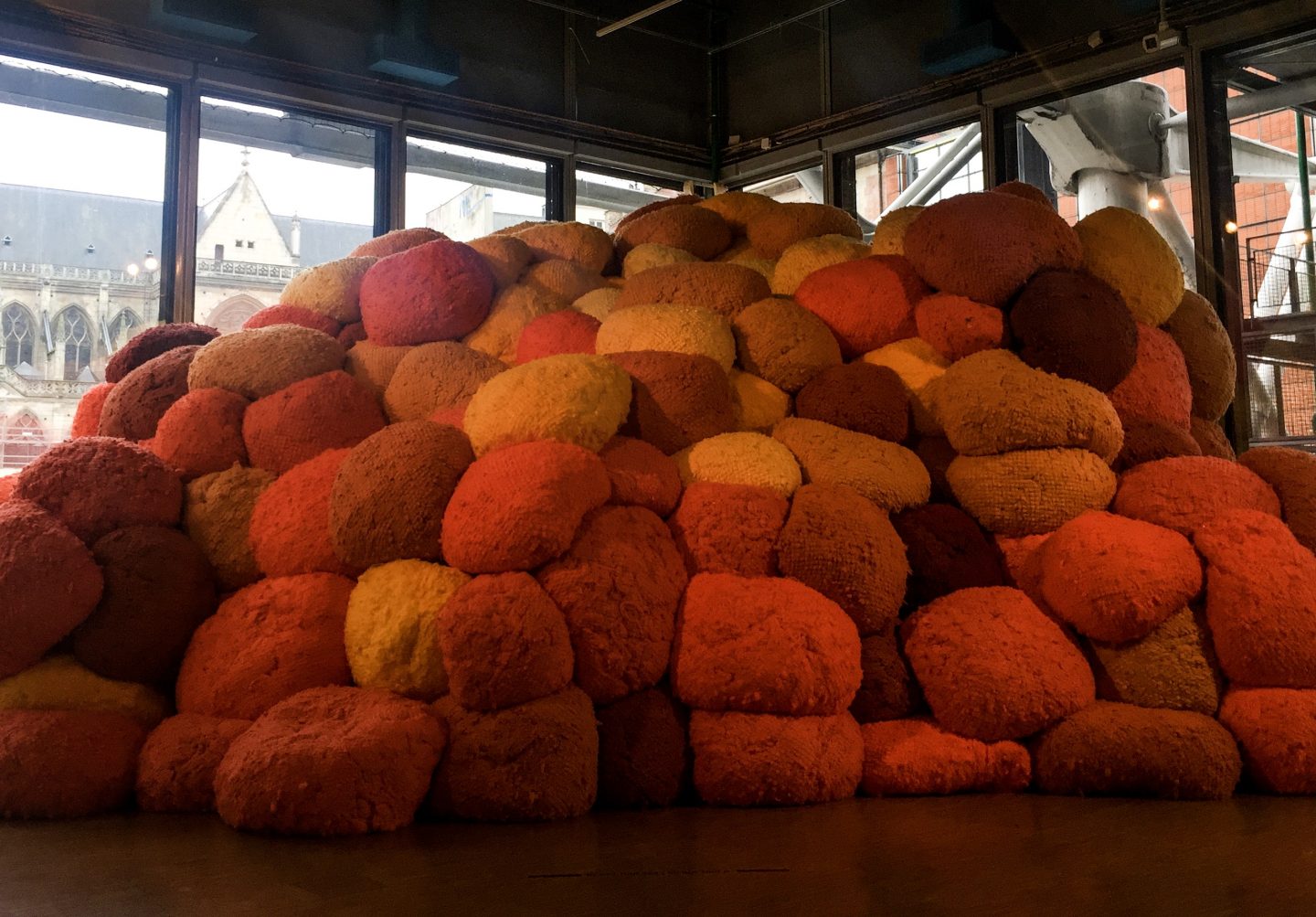
La sentinelle de safran (2018). Pigmented acrylic fiber. Variable dimensions.
How may these artworks support children’s creative learning through play with materials?
I have selected one of Hicks’ artworks ‘Lianes de Beauvais’ (2011-2012, pictured below)’ to consider how this could be used as a starting point for children’s creative learning through colour and material experimentation. When generating ideas for children’s art activities in art museums, I try to combine the information resources I have on the artist’s practice and processes with my own imagination and understanding of children’s inquiry-led learning. In sharing these ideas, I am making my thinking and curatorial process visible.
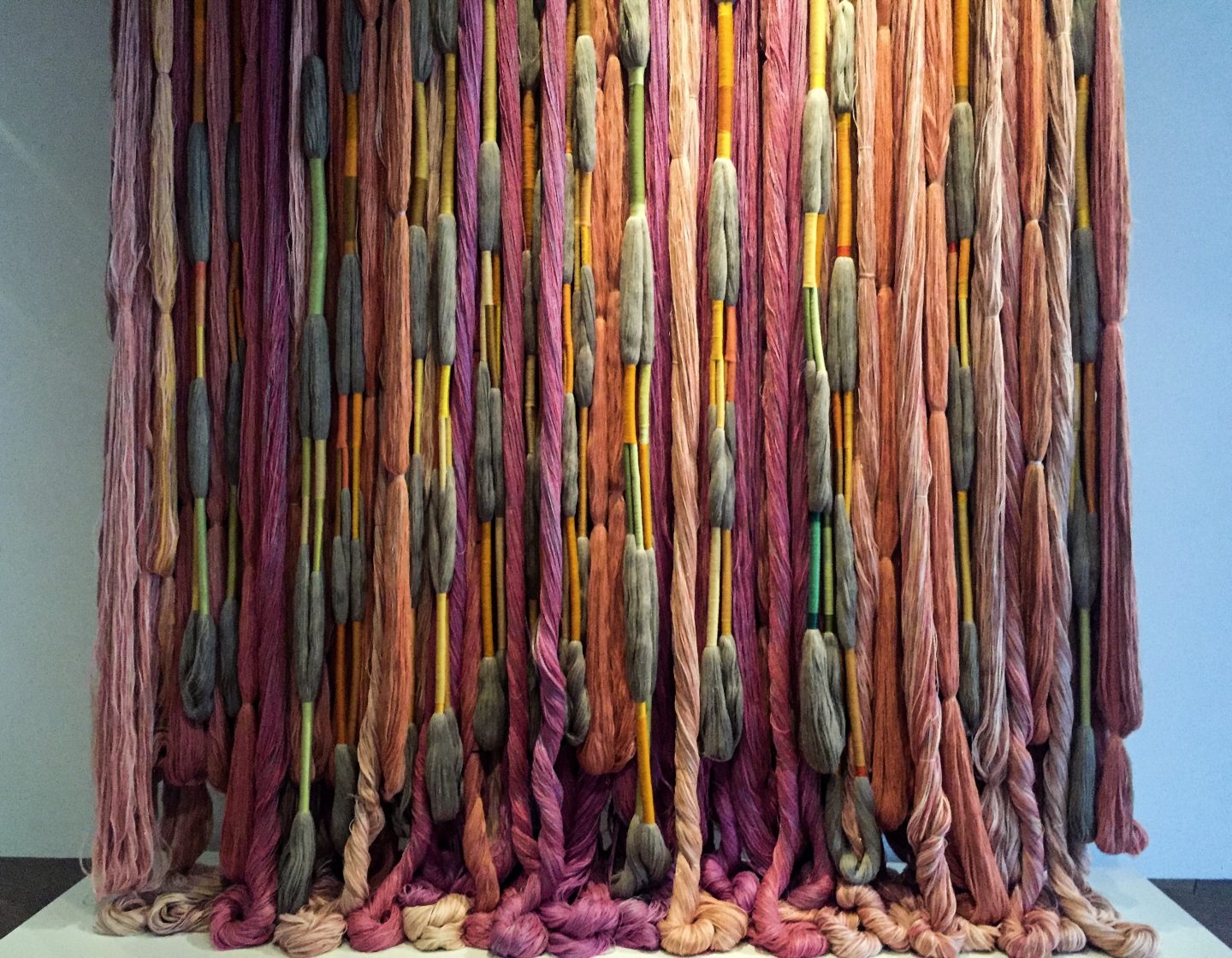
Lianes de Beauvais (2011-2012). Linen, pearlized cotton, wool, silk, nylon.
What materials could children use to experiment with colour through textiles? The artwork uses linen, cotton, wool and silk. As these are all non-toxic materials they should be safe to use with young children, they could be a great starting point. Also balls of string, yarn, wool but this is very expensive, linen, raffia, sheets of fabric, embroidery thread, nylon, muslin cloth, chiffon, organza and satin.
What other concepts could they explore relating to colour theory through textiles?
Hue, colour mixing saturation, contrast, tonality, primary colours, secondary colours, tertiary colours, colour value, warm colours and cool colours. Some of these could perhaps be introduced to children as vocabulary works as they are experimenting.
What art tools and equipment may children need to further support this experimentation? Ideas: Scissors, crochet hook (older children), knitting needles, loom, stretcher frame, felting tools, weaving sticks, large bobbins. To create large installations: equipment to hang material and threads from such as hooks on the wall or a temporary structure like a clothes hanger.
What artistic techniques that may be introduced to support this? Ideas: Draping, weaving, tying, knotting, felting, crocheting, braiding, twisting, rolling and bundling different textile materials.
Where to source affordable fabrics, threads and clothes? Ideas: Local recycled materials centre (like ReMida centres), charity stores often have fabrics and threads available or ask parents to donate any fabric. If you do have a budget, I am sure you can source plenty of lovely threads and fabrics online or in sewing stores. I found this set of 50 embroidery threads on eBay for just £3.64
As always, I would love to hear your ideas and suggestions for creative ways that artist’s processes could be used to encourage children’s creative learning. Best of luck with your experimentation!
Next week I will be looking at the site-specific installations of Daiga Grantina.
References
Josef Alber’s book ‘Interaction of color’ is one of the most significant texts written on art and design colour theory. Published in 1963, I think it is still as relevant now as ever. I recommend!
Tate website, 2018. Viewed at: http://www.tate.org.uk/art/artists/josef-albers-636


